ALAMOSANUM S. Watson, 1880
Distribution : Mexico (Sonora: Alamos Mts.)
Description (According to IHSP, 2003) :
Perennial herbs with much branched rootstock and numerous small sterile or floriferous tufted stems 6 - 10 cm tall.
Leaves alternate, linear-oblong to ovate, 3,5 - 5 mm, obtuse to acute, broadly spurred, papillate above, sometimes pubescent, terete, thick.
Inflorescences small, few-flowered corymbs, bracts ovate, mamillate.
FIowers 5-merous, long-pedicellate, sepals basally free, broadly spurred, ovate, obtuse, ± 2,5 x 1,5 mm, suberect, petals basally free, subovate, broad and abruptly narrowing towards the tip, subacute, whitish, ± 5 mm, suberect.
Cytology : 2n = 36, 35, 72, 108
Note :
S. alamosanum is closely related to S. diffusum.
Ray Stephenson (Sedum, Cultivated Stonecrops, 1994, pp 245 - 246) :
Similar to Sedum mellitulum, S. alamosanum is a low, creeping stonecrop with tight tufts of leaves. Plants form low hummocks and stems elongate next season. Blue-green, erect, tightly clustered leaves are linear, completely hiding stems, and they appear glaucous due to a covering of tiny white papillae. The previous season's leaves turn a lilac shade in good light. Plants are similar in appearance to the Eurasian S. hispanicum. Several whitish flowers are produced in simple clusters in spring. Sedum alamosanum is rare in cultivation.
Habitat : Growing in disjunct sites divided by the Gulf of California, this stonecrop is native to Baja California and the Eastern Sierra Madre of Sonora (especially the Alamos Moun-tains), Chihuahua, and Coahuila.
Main points of distinction : A magnifying glass is needed to observe the white papillae of leaves, which otherwise appear very similar to those of Sedum mellitulum. Pink-white spring flowers are carried on stout pedicels. Sepals are free, equal, and spurred. Sedum mellitulum does not have spurred sepals. Stamens are almost as long as petals, which have little pink dots. Carpels remain erect.
Variation : This species is very variable in the wild with several levels of ploidy. A diploid clone (n = 18) in my collection is much whiter than the plant photographed by Evans. Clausen (1981, 12) summarized variation in this species in this way: "Although plants from the populations ... are not the same in all respects, similarities outweigh differences." No subspecies have been erected for different levels of ploidy : n = 17 + 1, n = 18, n = 36, n = 54.
Horticulture : Sedum alamosanum is a neat, compact, creeping species - probably best in an indoor rock garden or outdoors in areas only very rarely experiencing frosts. Plants look delightful in a shallow bowl or pot.
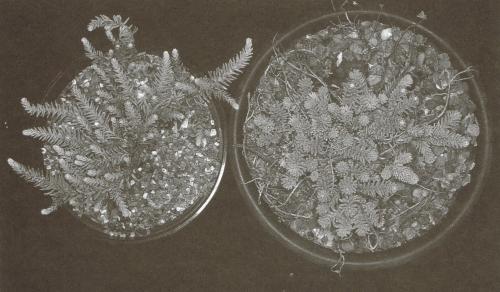
Two pots of Sedum alamosanum ; the larger 4,5-in (11-cm) pot contains a hexaploid (n = 54) plant from Chihuahua; the smaller pot contains a plant, probably a diploid (n = 18), from Sonora (near the type locality). Photo Ray Stephenson
Plant in the Succulent Collection Zürich :
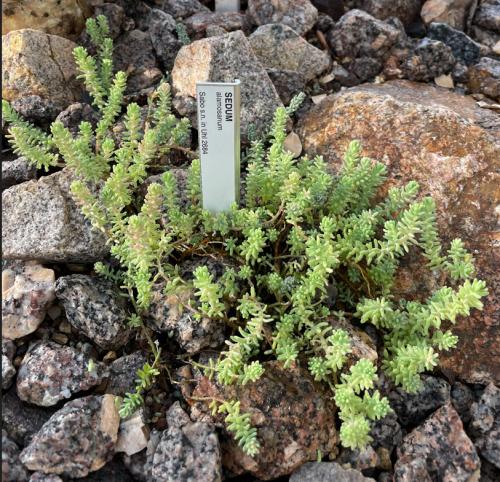
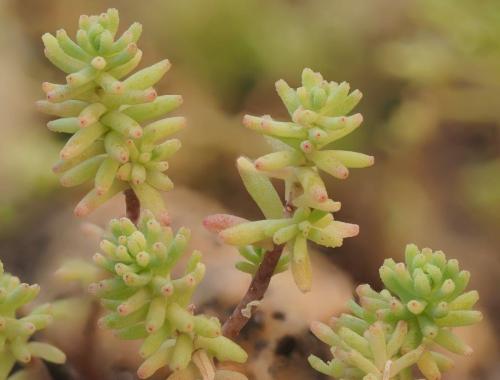
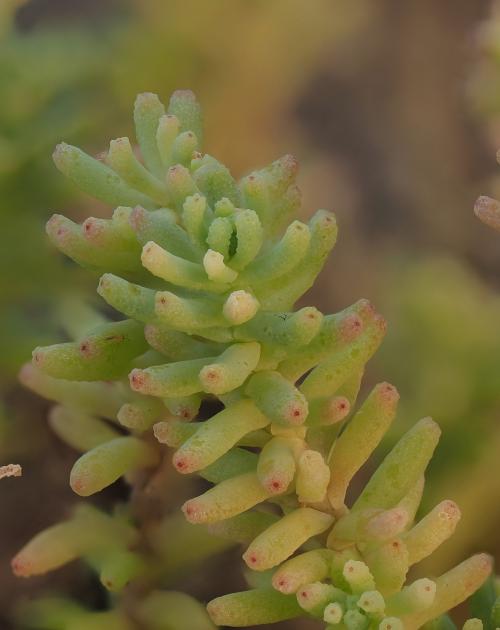
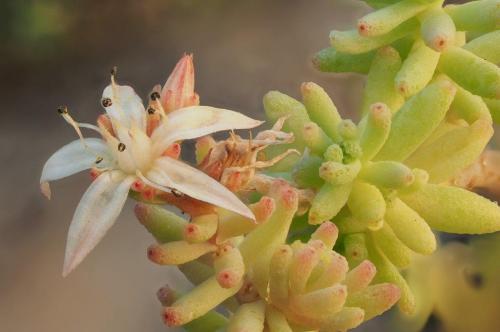
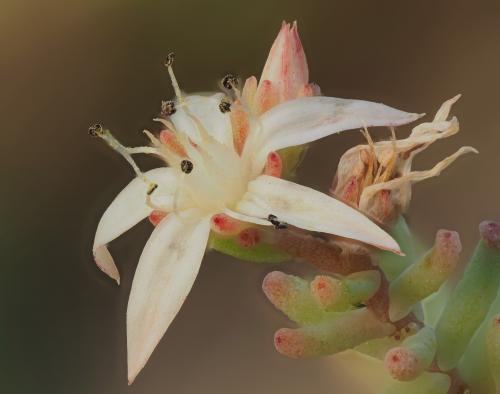
Photos Cyrill Hunkeler